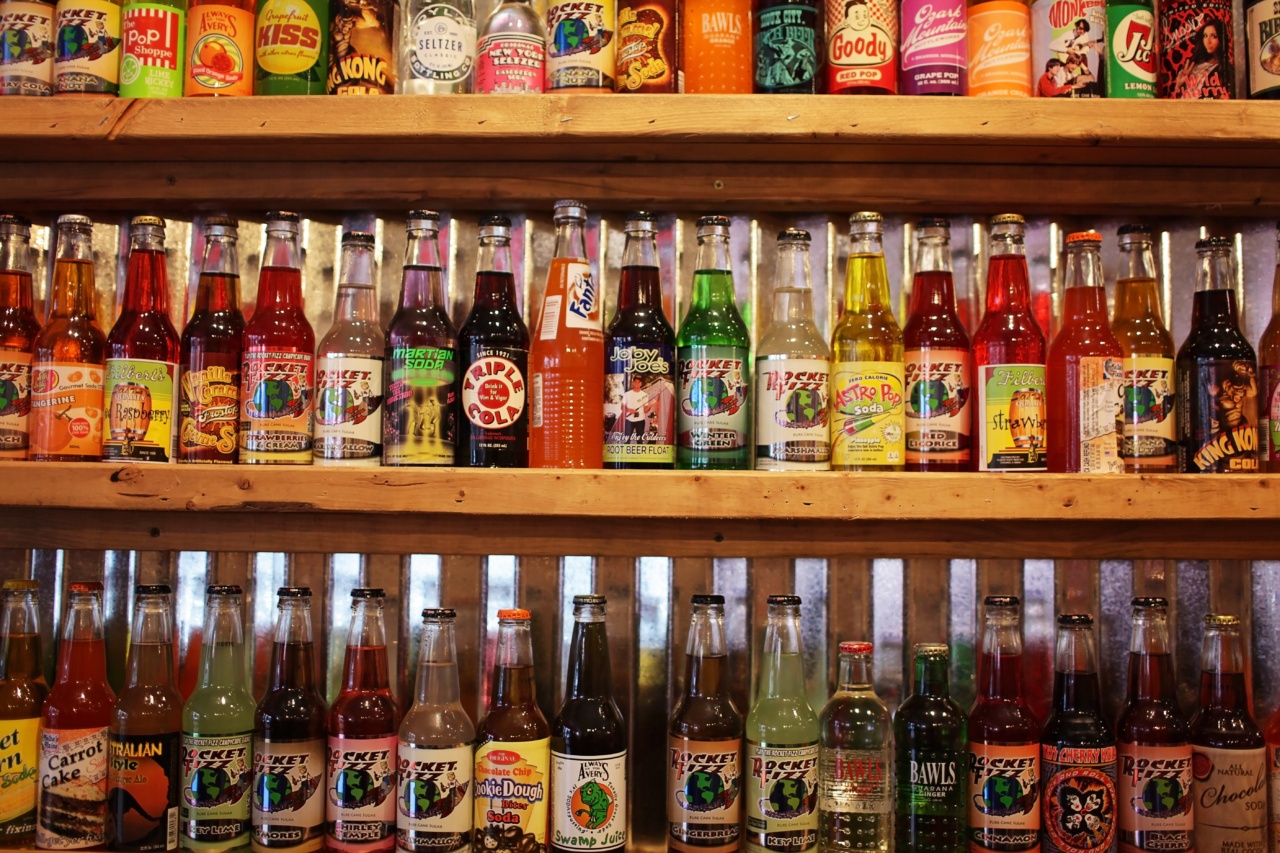The fizz and bubbles in a soft drink, known as carbonation, can actually have a significant impact on the overall flavor of the beverage. Carbonation can change the taste, texture, and even the sensation of a drink.
Understanding how carbonation affects the flavor of soft drinks can help you to better appreciate the nuances of your favorite beverages.
What is Carbonation?
Carbonation occurs when carbon dioxide gas dissolves in a liquid, creating bubbles. In soft drinks, carbonation is usually added during production to create the distinctive fizz that is characteristic of these beverages.
Carbonation can be added in different ways depending on the beverage and the manufacturer.
Carbonation and Taste
The carbonation in a soft drink can actually affect the taste. Carbonation creates a sensation of tingling or fizziness in the mouth that can alter the taste of the drink.
This is because carbon dioxide molecules interact with the taste receptors in the mouth.
In general, carbonation can create a more intense and complex flavor. This is because the carbon dioxide gas can carry volatile compounds from the drink to the nose, enhancing the aroma and flavor.
Some people believe that carbonated water can make the taste of beverages like coffee or wine more pronounced.
Carbonation and Texture
Carbonation can also affect the texture of a soft drink. The bubbles create a unique mouthfeel that can be described as frothy or effervescent. This sensation can be pleasant and refreshing, but it can also make the drink feel more acidic or spicy.
In some cases, the texture of a carbonated drink can be described as prickly or sharp. This is because the bubbles release carbon dioxide into the nasal cavity, creating a sensation of tingling or burning.
This effect can be intensified by certain types of carbonation, such as small, tight bubbles that create a more aggressive fizzing sensation.
Carbonation and Sensation
In addition to affecting the taste and texture of soft drinks, carbonation can also have a unique physiological effect.
The sensation of fizzing or tingling can trigger a reaction in the nerves of the mouth and nose, creating a refreshing, invigorating feeling. Some people find that the sensation of carbonation can make them feel more awake or refreshed, especially if they are drinking a carbonated beverage with caffeine or other stimulating ingredients.
Types of Carbonation
There are different types of carbonation that can affect the flavor, texture, and sensation of a soft drink. Understanding these differences can help you to choose the perfect carbonated beverage for your tastes and preferences.
Low Volumes of Carbonation
Beverages with low volumes of carbonation have a lower concentration of carbon dioxide gas. This can create a softer, smoother mouthfeel that is less intense than highly carbonated drinks.
Beverages with low carbonation can be refreshing and easy to drink, but they may lack the distinctive fizziness that many people associate with soda and other soft drinks.
High Volumes of Carbonation
Beverages with high volumes of carbonation have a more intense, aggressive mouthfeel. The bubbles are tighter and smaller, creating a sensation that can be described as prickly or sharp.
High carbonation can enhance the aroma and flavor of a drink, but it can also make the beverage more acidic or spicy. People who prefer highly carbonated drinks may enjoy the invigorating sensation of the fizz, but others may find it overwhelming or uncomfortable.
Natural vs. Artificial Carbonation
Soft drinks can be carbonated using natural or artificial methods. Natural carbonation occurs when carbon dioxide gas is naturally created during the fermentation process. This is how carbonation occurs in beer and some other alcoholic beverages.
Artificial carbonation, on the other hand, involves the addition of carbon dioxide gas after the beverage has been produced. Both natural and artificial carbonation can affect the flavor, texture, and sensation of a soft drink in different ways.
Carbonation and Temperature
The temperature of a carbonated beverage can also affect the flavor and sensation. Carbonation is less soluble in colder liquids, which means that carbonated beverages are less fizzy when they are served cold.
As the temperature of the drink warms up, the carbonation becomes more active and the sensation of fizziness becomes more pronounced. This is why many people prefer to drink soda and other carbonated beverages at room temperature or slightly chilled, rather than ice-cold.
Conclusion
Carbonation can change the taste, texture, and sensation of a soft drink in different ways depending on the type and amount of carbonation, as well as the temperature of the beverage.
Understanding how carbonation affects the flavor of soft drinks can help you to choose the perfect beverage for your tastes and preferences. Whether you prefer a soft, easy-drinking soda or an invigorating, fizzy beverage, there is a carbonated drink out there that is perfect for you.































